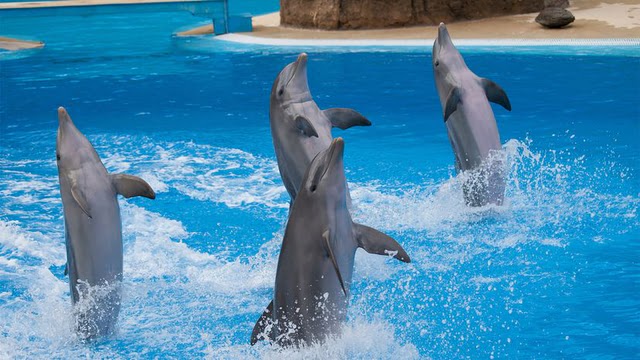Quck answer
Billie the Dolphin was a pioneer in teaching her fellow dolphins how to “dance” by twirling, leaping, and spinning in the water. She became an inspiration to other dolphins, who eventually began imitating her moves and creating their own. This behavior is thought to be a form of social learning and may play a role in dolphin communication and culture. Billie’s legacy lives on as future generations of dolphins continue to dance and play in the oceans.
Wild Animals

In 1983, Michael Jackson debuted a dance move called the Moonwalk on national television, captivating audiences worldwide. Similarly, in 1987, a sociable bottlenose dolphin named Billie learned a trick from captive dolphins called tail-walking, which is essentially the marine mammal version of the Moonwalk. Billie quickly became a sensation, swimming up to boats in South Australia’s Port River to show off her new move. What’s even more fascinating is that Billie’s wild dolphin friends began to imitate her, resulting in a local dolphin fad that lasted for years.
Research published in The Royal Society’s Biology Letters in 2018 highlights the social learning required for Billie to pick up the trick from captive dolphins and for her wild dolphin friends to learn it from her. This study is significant because cultural behavior is not often studied in whales and dolphins due to the length of time required to observe trends in cetacean behavior. The 30-year study was able to track the spread of tail-walking through the dolphin community and its eventual decline.
Whales and dolphins have social wiring similar to humans, making them highly intelligent and social animals. Billie’s story demonstrates the power of social learning and the potential for cultural behavior to spread among marine mammals.
Philippa Brakes, who is also from Whale and Dolphin Conservation, explained in a press release that gaining a deeper understanding of how behavior is socially transmitted can help us predict how different species may react to environmental changes. She added that the rapid spread of socially learned behaviors can happen much faster than natural selection through generations, which can be either advantageous or disadvantageous depending on the type of behavior that is being transmitted.
Interesting fact: In the 1960s, the U.S. Navy began training dolphins and other marine animals to perform special tasks underwater, such as delivering supplies to divers, searching for lost objects, and using cameras in their mouths for spying.
FAQ
1. What is the story of Billie the Dolphin?
Billie the Dolphin is a heartwarming story of a young female dolphin who discovers her passion for dance. She is different from her peers as she loves to move to the rhythm of the ocean. Billie’s unique talent helps her teach her fellow dolphins how to dance and express themselves through movement.
2. What inspired the author to write the story of Billie the Dolphin?
The author was inspired by the intelligence and creativity of dolphins, and how they are capable of expressing emotions and forming close social bonds. The story of Billie the Dolphin is a tribute to the incredible abilities of these fascinating marine mammals.
3. What lessons can children learn from the story of Billie the Dolphin?
The story of Billie the Dolphin teaches children the importance of embracing their unique talents and passions, and also the value of teamwork and collaboration. It encourages children to express themselves freely and creatively, and to appreciate the beauty of movement and dance.
4. How can parents use the story of Billie the Dolphin to teach their children about marine life?
The story of Billie the Dolphin can be a great tool for parents to introduce their children to the amazing world of marine life. It can spark their curiosity and interest in learning more about dolphins and other sea creatures, and also educate them about the importance of conservation and protecting our oceans.
5. Are there any real-life examples of dolphins teaching each other new skills?
Yes, there are many documented examples of dolphins teaching each other new skills and behaviors. For example, some dolphin populations have been observed using sponges as tools to protect their noses while foraging for food. This behavior was first observed in a few individuals and then spread to other members of the group through social learning.
6. Is it possible for dolphins to learn human dance moves?
While dolphins may not be able to learn human dance moves exactly, they are capable of mimicking and responding to human movements and sounds. There have been instances of dolphins swimming alongside boats and imitating the movements of people onboard. This shows their incredible ability to adapt and learn from their surroundings.
7. How can we help protect dolphins and their habitats?
There are many ways we can help protect dolphins and their habitats. One of the most important is to reduce our impact on the oceans by reducing our use of plastics and other pollutants. We can also support conservation organizations that work to protect dolphins and other marine life, and advocate for policies that protect their habitats and reduce human impact on the oceans.





Leave a Reply